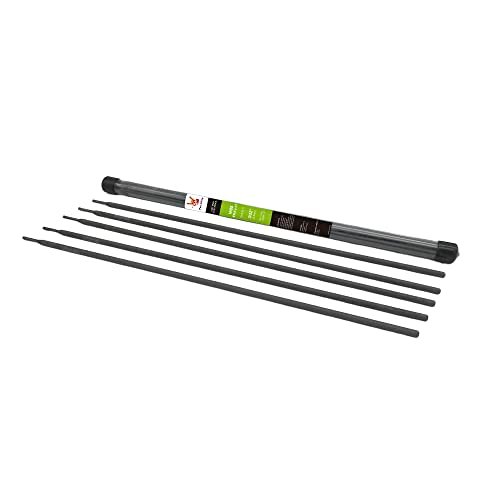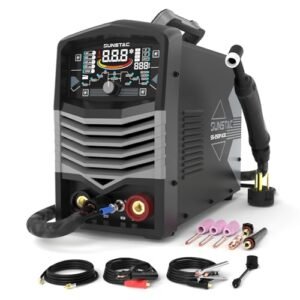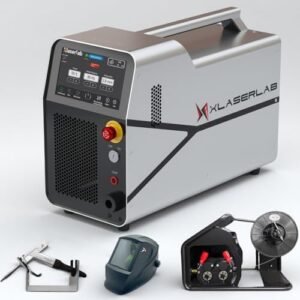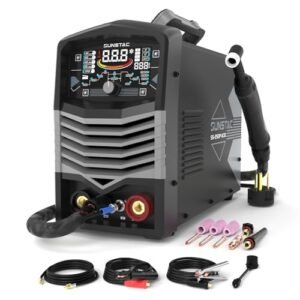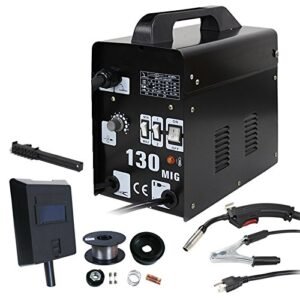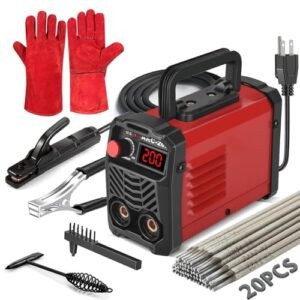Welding cast iron can feel like a bit of a dark art sometimes, but trust me, with the right cast iron welding rod, it becomes a much more manageable and even rewarding task. I’ve spent my fair share of hours in the workshop, repairing everything from old engine blocks to cracked stove grates, and I’ve learned that choosing the best cast iron welding rod for your specific job is half the battle. This guide will walk you through seven reliable options, highlighting their strengths so you can make an informed choice and get that critical repair done right.
Contents
- ENiFe-CI 5pcs 55-Percent Nickel Cast Iron Welding Electrode (3/32”)
- ENi-CI 99-Percent Nickle Cast Welding Electrode Rods 6pcs (3/32” x 12”)
- ENiFe-CI 5pcs 55-Percent Nickel Cast Iron Welding Electrode (1/8”)
- Weldcote Metals Nickel 99 Cast Iron Welding Electrode
- 77 Cast Iron Welding Rod Kit 1/2 lb (3/32″ diameter)
- ENi-CI 5pcs 99-Percent Nickle Cast Welding Electrode Rods (1/8”)
- Forney 43401 Nomacast Hardcast Iron Specialty Rod
- Helpful Comparison Insights
- Final Verdict
- Best Cast Iron Welding Rod: Your Questions Answered
- What’s the main difference between nickel and nickel-iron cast iron welding rods?
- Do I always need to pre-heat cast iron before welding?
- When should I use a 3/32″ vs. 1/8″ cast iron welding rod?
- Can I weld cast iron to steel with these rods?
- What kind of welder do I need for cast iron welding rods?
- How do I prevent cracking when welding cast iron?
- Are there any safety precautions specific to cast iron welding?
ENiFe-CI 5pcs 55-Percent Nickel Cast Iron Welding Electrode (3/32”)
This 55-percent nickel-iron electrode is a go-to for situations where you need serious strength and crack resistance. It’s designed to create robust welds on normal grades of cast iron and is particularly effective when you need to join cast iron to steel, a challenging task for many other rods. Its superior current-carrying capacity means a smoother, more consistent weld pool, making your job easier and the outcome more reliable.
Key features that stand out:
– Material Composition: 55% Nickel-Iron (ENiFe-CI) provides exceptional strength.
– Crack Resistance: Offers superior resistance to solidification cracking compared to pure nickel electrodes.
– Versatility: Excellent for joining cast iron to steel, expanding its application range.
– Application Focus: Ideal for repairing high-strength gray cast iron and nodular cast irons.
Pros:
– Produces very strong and durable welds.
– Significantly reduces the risk of cracking.
– Effectively joins dissimilar metals like cast iron and steel.
– Good for demanding, high-stress repairs.
Cons:
– May require slight preheating for critical or very thick sections.
Best for: High-strength cast iron repairs and joining cast iron to steel.
Expert Opinion: This rod is a workhorse for demanding cast iron repairs, especially where strength and preventing cracks are top priorities. It’s my choice when the repair needs to hold up under stress.
ENi-CI 99-Percent Nickle Cast Welding Electrode Rods 6pcs (3/32” x 12”)
When you need a weld that’s soft enough to be machined, drilled, or tapped afterward, this 99-percent pure nickel electrode is an excellent choice. Its weld metal is notably soft and easily workable, which is crucial for cosmetic repairs or parts requiring post-weld finishing. This rod is great for thin cast iron sections and can be used on cold or slightly preheated material, minimizing distortion.
Key features that stand out:
– Material Composition: 99% Pure Nickel (ENi-CI) ensures a soft, machinable weld.
– Machinability: Creates highly machinable weld deposits for easy finishing.
– Cold Welding Capability: Effective on cold or only slightly preheated material, reducing preparation time.
– Application Focus: Suitable for repairing thin cast iron parts and rectifying casting flaws.
Pros:
– Produces highly machinable and easily finished welds.
– Ideal for cosmetic repairs and parts requiring post-weld machining.
– Minimizes the need for extensive preheating.
– Great for thinner cast iron sections, reducing distortion.
Cons:
– The weld isn’t as strong as nickel-iron alloys for high-stress applications.
Best for: Machinable repairs on thin cast iron parts.
Expert Opinion: When you need a weld that you can drill, tap, or machine afterward, this pure nickel rod is often the go-to choice. It’s excellent for fine, detailed work.
ENiFe-CI 5pcs 55-Percent Nickel Cast Iron Welding Electrode (1/8”)
This is the beefier version of the 55-percent nickel-iron rod, offering the same fantastic strength and crack resistance, but in a larger 1/8-inch diameter. This size is particularly beneficial for tackling heavier, more substantial cast iron repairs where you need deeper penetration and more filler material. It maintains the excellent current-carrying capacity and resistance to solidification cracking, making it a reliable choice for significant structural repairs on high-strength grey and nodular cast irons.
Key features that stand out:
– Material Composition: 55% Nickel-Iron (ENiFe-CI) for robust strength.
– Diameter: 1/8” electrode, perfect for heavier-duty applications.
– Strength & Crack Resistance: Delivers strong welds with superior resistance to cracking.
– Versatile Application: Effectively welds high-strength cast irons and joins them to steel.
Pros:
– Ideal for robust, heavy-duty cast iron repairs.
– Provides excellent penetration for thicker sections.
– Strong and highly crack-resistant welds.
– Suitable for joining cast iron to steel in demanding situations.
Cons:
– Not suitable for very delicate or thin cast iron repairs.
Best for: Heavy-duty, high-strength cast iron repairs.
Expert Opinion: This thicker diameter version of the ENiFe-CI is perfect for tackling substantial repairs where you need both strength and reliable crack prevention. It’s my pick for larger breaks.
Weldcote Metals Nickel 99 Cast Iron Welding Electrode
The Weldcote Metals Nickel 99 electrode is a highly regarded pure nickel option for general cast iron repairs where machinability is key. Its high purity nickel composition ensures that the weld deposits are soft and easy to finish, allowing for subsequent drilling, tapping, or grinding without issue. It’s particularly useful for repairing diverse cast iron types, minimizing distortion thanks to its lower heat input requirements.
Key features that stand out:
– Composition: High Purity Nickel (Ni99) for soft weld characteristics.
– Machinability: Produces easily machinable weld deposits.
– Versatility: Suitable for joining and repairing various types of cast irons.
– Low Heat Input: Designed to minimize distortion and cracking risks during welding.
Pros:
– Excellent post-weld machinability.
– Reduces thermal stress and distortion.
– Versatile for a wide range of cast iron repairs.
– Smooth arc and minimal spatter for easier welding.
Cons:
– Not the strongest choice for repairs under extreme tensile stress.
Best for: General cast iron repairs where machinability after welding is crucial.
Expert Opinion: This Nickel 99 option is a solid choice for workshops needing dependable, post-weld machining capabilities without excessive preheating. It’s a reliable all-rounder for typical repairs.
77 Cast Iron Welding Rod Kit 1/2 lb (3/32″ diameter)
This welding rod kit stands out for its unique crack-resistant formula that eliminates the need for pre-heating, simplifying the welding process significantly. It’s a fantastic choice for on-the-spot repairs, especially on heavy machinery where pre-heating can be impractical or impossible. The kit comes with a good quantity of 3/32-inch rods, making it suitable for a variety of common repairs across different industries.
Key features that stand out:
– Kit Contents: Includes 14 rods, 3/32″ diameter, 12″ length for multiple repairs.
– No Pre-Heating: Crack-resistant formula negates the need for pre-heating or special cooling.
– Efficient Metal Transfer: Designed for high-efficiency weld metal transfer.
– Broad Application: Ideal for heavy machinery, automotive, marine, and RV repairs.
Pros:
– Extremely easy to use, especially in the field, as no pre-heating is required.
– Excellent crack resistance minimizes post-weld issues.
– Versatile for a wide array of heavy-duty applications.
– High-efficiency metal transfer for cleaner welds.
Cons:
– Specific alloy composition isn’t as detailed as some other professional options.
Best for: On-site repairs of heavy machinery and components where pre-heating is difficult.
Expert Opinion: This kit stands out for its “no pre-heat” claim, making quick repairs on large or sensitive cast iron pieces much more straightforward and less prone to stress. It’s a real time-saver.
ENi-CI 5pcs 99-Percent Nickle Cast Welding Electrode Rods (1/8”)
Bringing the benefits of pure nickel to a larger diameter, this 1/8-inch ENi-CI electrode is perfect for those repairs that need a machinable finish but also require a bit more fill or penetration than a 3/32-inch rod can provide. It’s still ideal for cold or slightly preheated material, minimizing thermal stress, and the soft weld metal makes post-weld finishing a breeze. This size is a great balance for general repair work on medium-thickness cast iron.
Key features that stand out:
– Material Composition: 99% Pure Nickel (ENi-CI) for superior machinability.
– Diameter: 1/8” electrode, offering good fill and penetration for various repairs.
– Machinability: Produces soft, easily machinable weld deposits.
– Cold Deposition: Suitable for cold or slightly preheated material, preventing distortion.
Pros:
– Excellent machinability for finishing and alterations.
– Good for general repairs on medium-thickness cast iron.
– Minimal preheating requirements.
– Provides a high-quality, pure nickel deposit.
Cons:
– Not designed for structural repairs where maximum tensile strength is required.
Best for: Machinable repairs on medium-thickness cast iron parts.
Expert Opinion: This 1/8″ ENi-CI offers the excellent machinability of pure nickel, providing a good balance for repairs that need a bit more fill or penetration than the 3/32″ rod. It’s a versatile workshop staple.
Forney 43401 Nomacast Hardcast Iron Specialty Rod
The Forney Nomacast is a specialty rod that shines when you’re dealing with the most challenging cast iron surfaces: dirty, heat-affected, or oxidized. Its non-conductive coating is specifically designed to help prepare these contaminated castings, essentially cleaning the surface as you weld. This pre-treatment is critical for ensuring that subsequent, stronger welds (often done with high nickel alloys) adhere properly and are free from contamination-induced defects.
Key features that stand out:
– Special Coating: Features a unique non-conductive coating for challenging surfaces.
– Contaminated Surfaces: Excellently suited for welding dirty, heat-affected, and oxidized cast iron.
– Cladding Capability: Ideal for cladding contaminated castings to prepare them for further welding.
– Pre-Treatment: Effectively prepares surfaces for joining with high nickel alloys.
Pros:
– Invaluable for repairing heavily contaminated or problematic cast iron.
– Cleans and prepares surfaces, reducing rework.
– Unique non-conductive coating helps manage difficult conditions.
– Enhances the success rate of subsequent high-nickel alloy welds.
Cons:
– Primarily a specialty rod for surface preparation, not a primary joining rod for all applications.
Best for: Prepping dirty, contaminated, or oxidized cast iron surfaces before final repairs.
Expert Opinion: This rod is a lifesaver for challenging cast iron repairs where you’re dealing with a lot of contamination. It effectively cleans and prepares the surface, making later, stronger welds much more successful.
Helpful Comparison Insights
When choosing the best cast iron welding rod, understanding the subtle differences between types is key. Nickel-Iron (NiFe-CI) rods like the ENiFe-CI options provide superior strength and crack resistance, making them the top choice for high-stress repairs and for joining cast iron directly to steel. They’re ideal when the integrity of the weld is paramount.
On the other hand, Pure Nickel (Ni-CI) rods, such as the ENi-CI and Weldcote Nickel 99, deliver excellent machinability. This means you can easily drill, tap, or grind the weld afterward, which is perfect for cosmetic repairs or parts that need post-weld finishing. They also generally require less pre-heating, making them easier to use for many common repairs.
For dirty or contaminated cast iron that typically resists good welds, a specialty rod like the Forney Nomacast is invaluable. It’s designed to clean and prep the surface, improving the outcome of subsequent welds. If your main goal is to avoid pre-heating altogether and get a fast, crack-resistant repair, the 77 Cast Iron Welding Rod Kit is specifically formulated for that convenience. Finally, remember that rod diameter matters: 3/32″ rods are better for thinner sections and more delicate work, while 1/8″ rods provide more fill and penetration for heavier repairs.
Final Verdict
Choosing the best cast iron welding rod really boils down to your specific project needs. If you’re tackling a high-stress repair or joining cast iron to steel, the ENiFe-CI 55-percent Nickel-Iron electrodes (both 3/32″ and 1/8″) are your champions, offering unmatched strength and crack resistance. For those jobs where machinability is paramount, allowing you to drill or tap the finished weld, the ENi-CI 99-percent Pure Nickel electrodes (3/32″ and 1/8″) or the Weldcote Nickel 99 are fantastic choices.
The 77 Cast Iron Welding Rod Kit stands out for its convenience and no-preheat formula, making it ideal for quick, on-site repairs on heavy equipment. And for those exceptionally challenging, dirty cast iron pieces, the Forney Nomacast is an indispensable specialty rod for surface preparation. My advice? Keep a selection of both nickel and nickel-iron rods on hand. You’ll be ready for almost anything cast iron throws at you.
Best Cast Iron Welding Rod: Your Questions Answered
What’s the main difference between nickel and nickel-iron cast iron welding rods?
The primary difference lies in their strength and machinability. Pure nickel (Ni99 or ENi-CI) rods produce softer, highly machinable welds, making them perfect for repairs that need to be drilled, tapped, or ground afterward. They also work well on cold or slightly preheated material. Nickel-iron (NiFe-CI) rods, typically with 55% nickel, create much stronger, more crack-resistant welds. They’re ideal for high-strength repairs, nodular cast iron, and for joining cast iron to steel, but the weld is harder to machine.
Do I always need to pre-heat cast iron before welding?
Not always, but often. Pre-heating helps to slow the cooling rate of the weld, reducing thermal stress and the risk of cracking, which is a common issue with cast iron due to its brittle nature. Pure nickel rods can sometimes be used with little to no pre-heating on thinner sections. However, for thicker or more critical repairs, especially with nickel-iron rods, pre-heating to around 300-600°F (150-315°C) is often recommended for best results. Some specialty rods, like the 77 Cast Iron Welding Rod Kit, are specifically designed to eliminate pre-heating.
When should I use a 3/32″ vs. 1/8″ cast iron welding rod?
The rod diameter should match the thickness of the cast iron you’re welding and the nature of the repair. A 3/32″ (2.4mm) rod is better for thinner sections, delicate work, or when you need more control and less heat input. It’s good for smaller cracks or cosmetic repairs. An 1/8″ (3.2mm) rod is suitable for thicker cast iron sections, heavier repairs, or when you need more fill material and deeper penetration. Always try to match the rod size to the base metal thickness for optimal results.
Can I weld cast iron to steel with these rods?
Yes, some cast iron welding rods are specifically designed for this purpose. Nickel-iron (NiFe-CI) electrodes, such as the ENiFe-CI options reviewed, are excellent for joining cast iron to steel. Their higher tensile strength and crack resistance make them suitable for these dissimilar metal applications, which can be quite challenging with other types of filler metals. Pure nickel rods are generally less effective for cast iron to steel joints due to lower strength.
What kind of welder do I need for cast iron welding rods?
Most cast iron welding rods are designed for Shielded Metal Arc Welding (SMAW), commonly known as stick welding. This means you’ll need a stick welder (arc welder) that can provide either AC (alternating current) or DC (direct current) output. Many cast iron rods, especially nickel-based ones, run well on DC reverse polarity (DCEP), but always check the manufacturer’s recommendations for specific amperage and polarity settings for the best performance.
How do I prevent cracking when welding cast iron?
Preventing cracks is crucial when welding cast iron. Here are key strategies: Proper rod selection (nickel-iron for strength, pure nickel for machinability); Pre-heating the workpiece to reduce thermal shock (as discussed above); Slowing the cooling rate by covering the part with an insulating blanket or sand after welding; Short, intermittent welds (skip welding) to minimize heat build-up; and Peening the weld immediately after deposition (hammering the hot weld to relieve stress).
Are there any safety precautions specific to cast iron welding?
Yes, safety is paramount. Cast iron welding can produce fumes containing nickel, iron, and other elements, which can be hazardous if inhaled. Always ensure adequate ventilation in your workspace or use a fume extractor. Wear appropriate Personal Protective Equipment (PPE), including a welding helmet with the correct shade lens, flame-resistant clothing, welding gloves, and safety glasses. Be aware of hot metal and grinding hazards. Always follow manufacturer safety data sheets (MSDS) for specific rod compositions.
Affiliate Disclosure: As an Amazon Associate, I earn from qualifying purchases made through links on this site.

